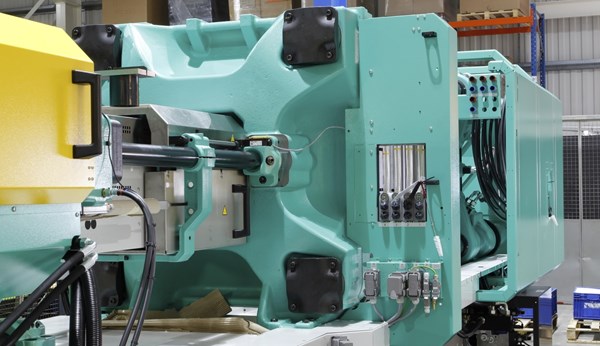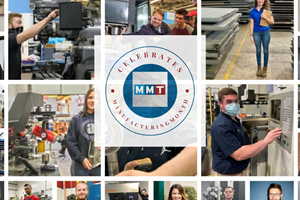A Temp Turnover Solution
Some mold builders, especially those also involved in molding, use temporary labor. And this comes with a challenge: turnover. What's needed is a retention strategy that considers everything from pay to open communication.

Manufacturing, including moldmaking, continues to face the lack of a skilled workforce, but there is another aspect of labor they also must contend with: temporary labor turnover. Mold shops, especially those involved in molding, employ temporary workers, so they know the effects of this challenge. With training, loss of productivity and the costs associated with finding and evaluating new talent, reducing turnover can have a far reaching impact, according to Revere Plastics in Jeffersonville, Indiana.
Here is their story: Revere implemented a retention strategy that enabled them to work with temporary staffing partners to implement positive changes. This reduced its temporary workforce turnover rate of more than 40 percent. Working with staffing firm Nesco Resource, Revere was able to achieve this improvement through a range of new policies that ranged from increasing pay to opening a dialogue with temporary workers.
The Revere team knew they needed to take many factors beyond pay rates into consideration. Carol Fountain, manager of Human Resources for the Revere Jeffersonville plant explains the big picture perspective that her team took to addressing the challenge, “We wanted to implement a strategy based on real information from the temps themselves. We implemented an exit survey to see what issues were driving temps to leave a job and what motivated them to stay.” Surveys revealed some key areas beyond pay, namely better communication about the job prior to assignments, a more robust onboarding process, more direct management of temporary workers, and a graduated pay scale.
One key to the success that Revere has seen in reducing turnover rates has been through communication prior to assignment. Surveys revealed that if workers were informed of key details about the job before beginning, retention rates improved significantly. The jobs at Revere, which are a mix of inspection and assembly work, usually involve standing, bending, and also cell phone are prohibited on the facility floor.
The operators are the eyes of the plastic’s plant, checking to make sure Revere is delivering quality parts to their customers. They inspect the parts and then apply the appropriate label, cut gates off and pack parts out. Operators also use a pallet builder system to create labels and scan the products into their inventory when they are completed. Some other jobs available at Revere include assembly, such as placing filtering screens in products, welding pieces together, and then running the products through leak testing.
“We found that people who come informed of the job’s parameters to stay longer,” says Fountain. “The upfront communication at the staffing firm helps ensure that workers are walking into the plant with as few surprises about the job as possible.”
Once workers arrive at Revere’s plant, they are immediately assigned a mentor for their first shift of work. This “buddy system” allows for temporary workers to ask questions and to feel comfortable about the work that they are performing. By the second shift of work, the mentor is still available close by, but the worker is given more independence. Carol Fountain points out that the system not only serves to train employees, but it also helps develop a culture of trust, "The jobs are generally not overly complex, but the process and the environment are new to temporary employees. We want them to feel that they’re part of a team and the buddy system is key to creating that atmosphere.”
The mentor also provides the workers with a brief history of the company and the products that it produces as well as outlines the basic rule of the facility and information on breaks, location of bathrooms, and break rooms.
Related Content
2021 30 Under 30 Honors Program: Mentoring in the Next-Generation of Moldmaking Professionals
Young professionals are vital to the moldmaking industry, and it is important to acknowledge those making strides in shaping the industry's future. MoldMaking Technology recognizes the industry's young talent through its 30 Under 30 Honors Program.
Read MoreWomen Impacting Moldmaking
Honoring female makers, innovators and leaders who are influencing our industry's future.
Read MoreQuestions and Considerations Before Sending Your Mold Out for Service
Communication is essential for proper polishing, hot runner manifold cleaning, mold repair, laser engraving and laser welding services.
Read MoreConsiderations for Mold Base Material Selection
Choosing the right material can greatly affect the profitability and cost of your application.
Read MoreRead Next
How to Use Strategic Planning Tools, Data to Manage the Human Side of Business
Q&A with Marion Wells, MMT EAB member and founder of Human Asset Management.
Read MoreHow to Use Continuing Education to Remain Competitive in Moldmaking
Continued training helps moldmakers make tooling decisions and properly use the latest cutting tool to efficiently machine high-quality molds.
Read MoreReasons to Use Fiber Lasers for Mold Cleaning
Fiber lasers offer a simplicity, speed, control and portability, minimizing mold cleaning risks.
Read More








_300x250 1.png;maxWidth=300;quality=90)
.jpg;maxWidth=300;quality=90)
















